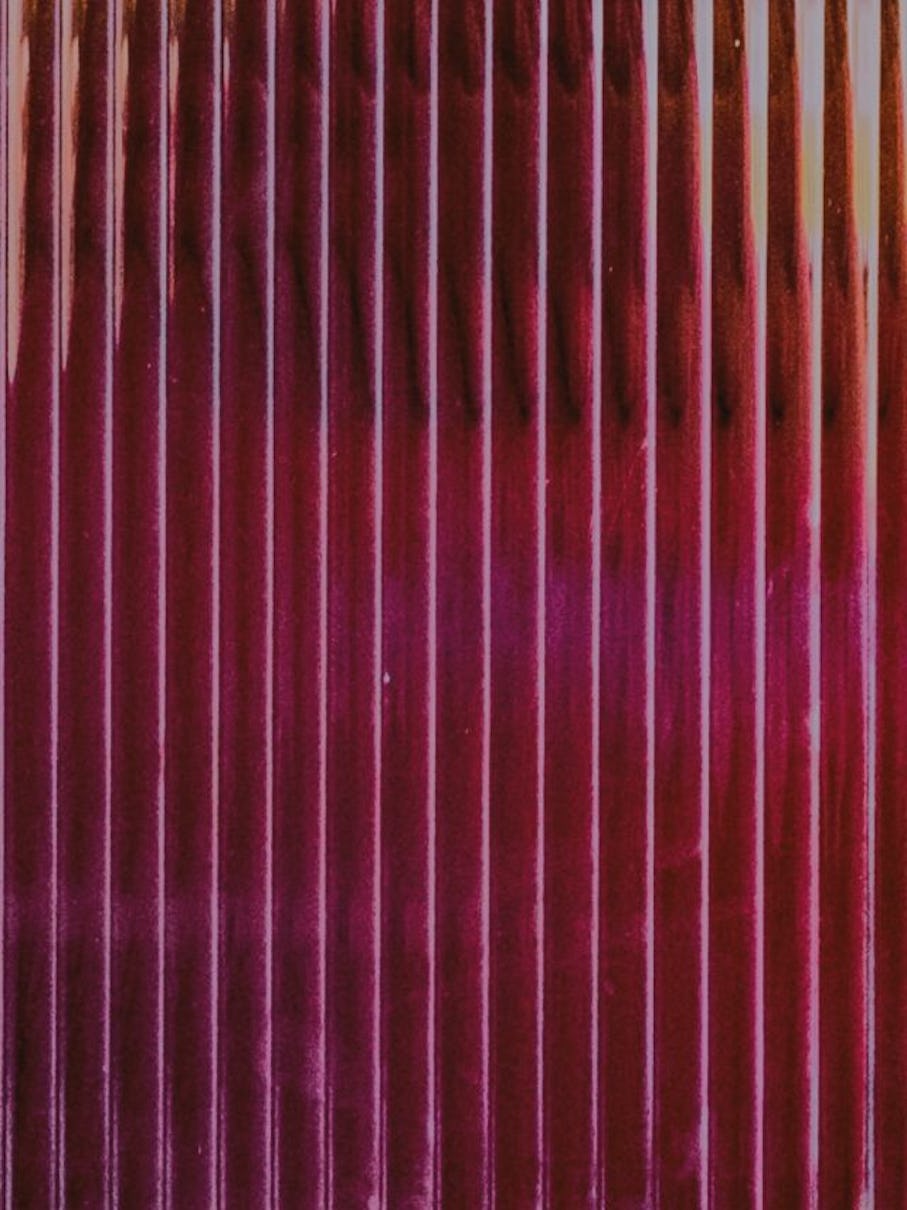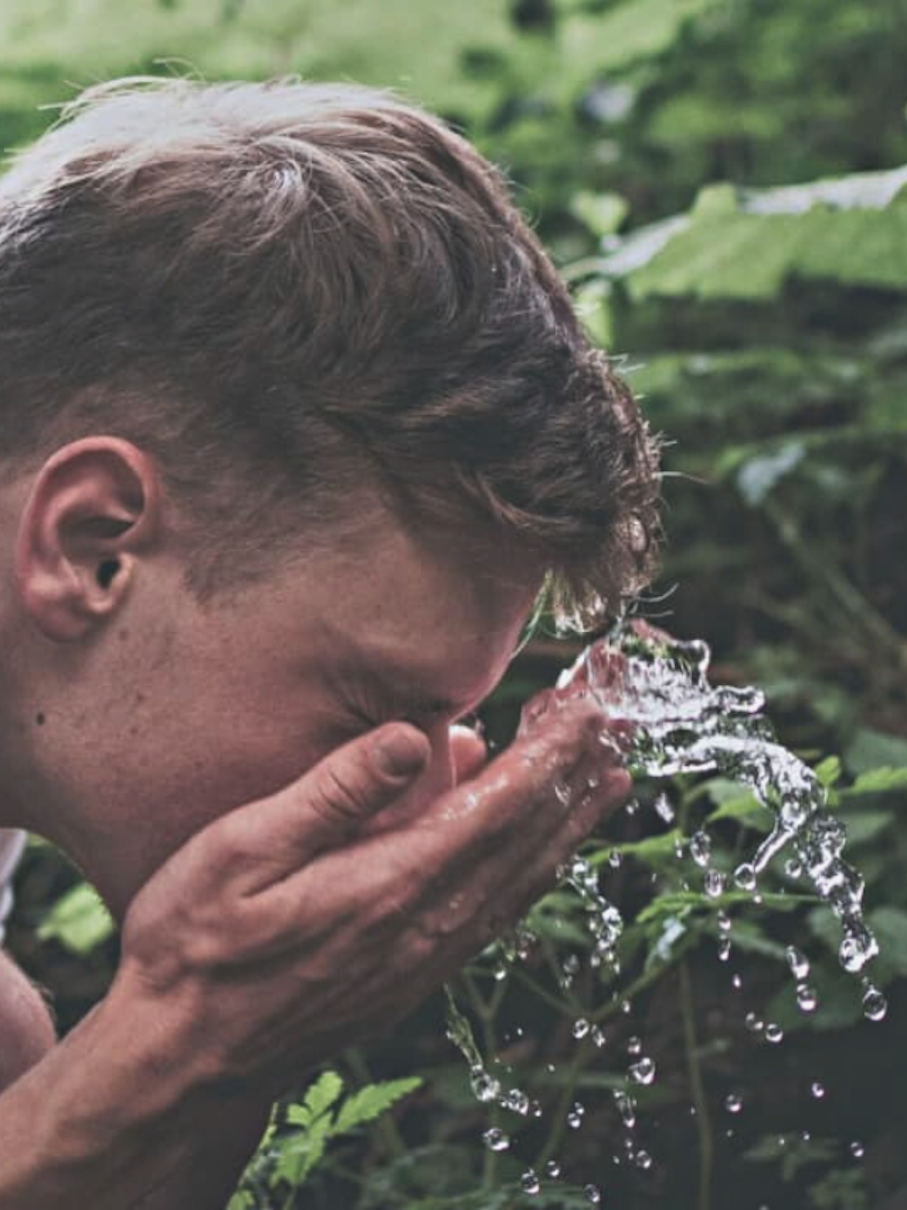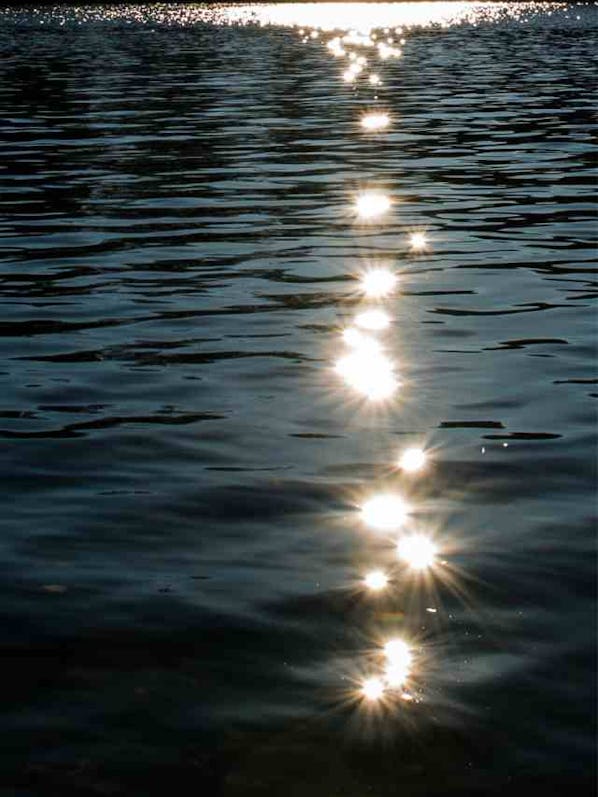
AGE-RELATED MACULAR DEGENERATION - What You Need to Know

Dry Eyes - Lasting Relief
By understanding what UV (ultraviolet) light is, how it interacts with our eyes, and its potentially harmful effects, we can better equip ourselves to protect our eyes.
In this article, we'll delve deeper into the impact of UV light on our eyes, discuss some of the most common UV-related eye conditions, and provide actionable steps to safeguard your eyes against UV damage. Whether basking in the summer sun or enjoying a snow-covered landscape, this guide will help protect your precious eyesight from harmful UV radiation.

Every time you step outside on a sunny day or lounge under the bright lights at your favourite coffee shop, your eyes are exposed to a spectrum of light, part of which is Ultraviolet (UV) radiation. Invisible to the naked eye, UV radiation is a part of the light spectrum that carries more energy than visible light. While it plays an essential role in vitamin D synthesis, prolonged and unprotected exposure to UV light can harm our skin and, more importantly, our eyes.
UV light comes in three types: UVA, UVB, and UVC. Although UVC rays from the sun are absorbed by the Earth's atmosphere and do not reach the ground, artificial sources like welding torches and UV sanitising bulbs can produce this harmful radiation. However, UVA and UVB rays reach the Earth's surface and can significantly impact our eye health.

The UV spectrum covers the wavelength range of 100-400 nm and is divided into three bands: UVA (315-400 nm), UVB (280-315 nm), and UVC (100-280 nm).
About 95% of the UV rays that reach the ground are UVA rays. UVA rays can penetrate the eye and may harm the macula - the part of the retina responsible for sharp, central vision. Over time, excessive exposure to UVA rays can contribute to developing certain types of Cataracts and potentially macular degeneration, a leading cause of vision loss for individuals over 60. It is also associated with skin ageing.

UVB light has higher energy levels than UVA rays, & typically damages the outermost layers of your skin, causing sunburn. The ozone layer partially absorbs UVB rays but are more intense than UVA rays. They're primarily responsible for sunburn and can cause direct damage to the DNA in our skin cells. In eye health, these rays are absorbed by the cornea and the lens. They can cause photokeratitis, often called 'snow blindness', and pterygium, also known as 'surfer's eye'.
UVC rays from the sun are generally absorbed by the Earth's atmosphere and do not reach the ground. However, artificial sources like welding torches and UV sanitising bulbs can produce this harmful radiation.

Chronic exposure to UV light can have far-reaching implications for our eye health. One of the most significant long-term effects is the development of cataracts. The eye's lens becomes cloudy in this condition, leading to impaired vision. According to the World Health Organization, up to 20% of cataracts may be caused by overexposure to UV radiation and are avoidable.
UV exposure is also associated with macular degeneration, a leading cause of severe vision loss in people over 60. The macula, the part of the retina responsible for central vision, can be damaged by constant exposure to UV rays.
Another condition, pterygium, often referred to as 'surfer's eye', is a yellowish growth on the white of the eye that can eventually obstruct vision. Pterygium has been linked to prolonged UV exposure, especially in sunny climates. Similarly, photokeratitis, a painful but usually temporary condition akin to sunburn of the eye, can be caused by high short-term exposure to UVB rays.

Furthermore, the skin around our eyes, including our eyelids, is vulnerable to UV radiation, which can lead to skin cancers. Regular exposure to UV light can also exacerbate dry eye symptoms, a common condition amongst women over 45, particularly during menopause and perimenopause.
Remember, the damage caused by UV radiation is cumulative and often irreversible, so it's essential to start protecting your eyes from harmful UV light as early as possible. This long-term commitment to eye health can significantly decrease the risk of developing UV-induced eye disorders and preserve your vision for years.

Photokeratitis, often called 'snow blindness,' is a painful, temporary eye condition caused by exposure to UVB rays. Symptoms can include:
Both conditions are growths on the eye's surface. They are often associated with prolonged exposure to UV light and dry, dusty conditions. Symptoms may include:
Cataracts, characterised by clouding the eye's natural lens, have been linked to extensive UV exposure. Symptoms gradually progress and can include:
While the link between UV light and macular degeneration isn't as clear as with other conditions, some studies suggest excessive UV exposure could contribute to this serious, vision-threatening condition. Symptoms may include:
Although dry eyes can result from various factors, UV radiation can exacerbate the condition by causing inflammation and disrupting tear production. Symptoms can include:
Prolonged exposure to UV light can lead to skin cancer on the eyelids and the skin surrounding the eyes. Early signs can include:
Prolonged exposure to UV light has been directly linked to the development of several eye diseases, including cataracts and macular degeneration. Cataracts, characterised by a clouding of the eye's natural lens, are a common result of excessive UV exposure. The World Health Organization estimates that up to 20% of cataract cases globally are attributable to UV radiation and are potentially preventable with appropriate eye protection.
UV radiation also plays a role in developing age-related macular degeneration (AMD), a leading cause of vision loss among older adults. AMD affects the macula, the central part of the retina responsible for sharp vision. Excessive UV radiation can damage the macula over time, accelerating the progression of AMD.

Dry eye syndrome is common when the eyes do not produce enough tears or when tears evaporate too quickly. While several factors contribute to this condition, research indicates that prolonged UV exposure can exacerbate dry eye symptoms.
UV radiation can cause inflammation of the eye's surface and disrupt tear film - the eye's protective layer of moisture. This disruption can result in quicker evaporation of tears, leading to dry eyes. Furthermore, UV light can harm the Meibomian glands in the eyelids, which are responsible for oil production that prevents tear evaporation.

Menopause, a natural biological process characterised by the end of menstrual cycles, is often associated with various changes in the body, including increased sensitivity to UV light. This heightened sensitivity is primarily due to hormonal changes, particularly the decline in oestrogen levels, which can influence the body's response to UV radiation.
In terms of eye health, these hormonal changes can make the eyes more susceptible to dryness, inflammation, and other UV-induced damage. It's also worth noting that post-menopausal women are more likely to develop Cataracts and Age-related Macular Degeneration, two eye conditions closely linked with UV exposure.
As women navigate the menopausal transition, it becomes increasingly important to safeguard their eyes from UV radiation. This may involve wearing UV-protective eyewear, taking eye health supplements, and using moisturising eye drops or sprays designed to alleviate dryness and discomfort associated with UV exposure.

Sunglasses are not merely a fashion accessory but are crucial in protecting your eyes against harmful UV radiation. Opt for sunglasses that block 100% of both UVA and UVB rays. Wraparound styles offer additional protection by preventing light from entering from the sides. Remember, the colour or darkness of the lenses doesn't necessarily correlate with UV protection—always check the UV protection level.
Invest in protective eyewear if you work in an environment with high UV exposure or engage in outdoor activities like skiing or mountain climbing. Goggles or safety glasses designed to block UV radiation can offer an added layer of defence.
While sunglasses are vital, they can't block all UV rays from reaching your eyes. Supplement your sunglasses with a wide-brimmed hat to shield your eyes from sunlight from above or reflected off the ground.
UV radiation is at its peak when the sun is at its highest (usually between 10 a.m. and 2 p.m.). During these hours, seek shade under a tree, umbrella, or other shelter to minimise direct UV exposure.
Don't be fooled by an overcast sky—UV rays can penetrate clouds and cause eye damage. It's important to wear protective eyewear even when the sun isn't visible.
Some contact lenses offer UV protection. While they don't cover the entire eye and surrounding areas like sunglasses, they can add a layer of UV protection. Always pair UV-blocking contacts with sunglasses for optimal protection.
UV radiation can penetrate windows in homes, cars, and offices. Consider applying UV-protective film to your windows or choosing a car with UV-protective windshields.
Regular eye exams allow your optometrist to detect early signs of UV damage, enabling prompt treatment to prevent further harm. Adults should have their eyes tested every two years, while those over 60 should have annual exams.
Certain nutrients like Lutein and Zeaxanthin, found in our Essential Eye Vitamins and Ultimate Eye Vitamins, can help protect your eyes against UV damage. They are antioxidants that accumulate in the retina and act like natural sunglasses, absorbing harmful UV rays.
For those prone to dry eyes, using preservative-free, moisturising eye drops and sprays can help alleviate symptoms and protect your eyes from further irritation from UV exposure.
Understanding the risks of UV exposure is the first step towards protecting yourself, your family and friends.
There aren't any eye drops that can directly shield your eyes from UV radiation – sunglasses and protective eyewear remain the most effective way to block harmful UV rays.
However, certain eye drops and sprays can help alleviate symptoms caused or worsened by UV exposure, such as dry or irritated eyes. Our vegan, cruelty-free, and preservative-free Eye Drops are designed to relieve these discomforts. Our Essential Eye Vitamins and Ultimate Eye Vitamin contain Lutein and Zeaxanthin that can help protect your eyes against UV damage.

While many of us worry about the effects of screen time on our eyes, it's important to know that digital screens, such as computers, tablets, and smartphones, do not emit harmful UV light. Thus, excessive screen time does not expose our eyes to the UV radiation associated with sunlight and some artificial lights.
However, long hours in front of screens can still strain our eyes due to blue light exposure and lack of blinking, leading to Digital Eye Strain or Computer Vision Syndrome. Symptoms include dryness, soreness, blurred vision, and headaches. Although blue light from digital devices is less potent than UV light, its proximity to our eyes can still cause discomfort. To help mitigate these effects, consider adopting the 20-20-20 rule: every 20 minutes, look at something 20 feet away for 20 seconds. Also, screen filters, computer glasses or adjustments to your screen settings can help reduce blue light exposure.

The best sunglasses for UV protection are those labelled as blocking 100% UVA and UVB rays. The darkness or colour of the lenses does not necessarily correlate with UV protection, so always check the label. Polarised lenses can reduce glare, especially on water or snow. Still, it's important to note that polarisation does not equate to UV protection.
Consider wraparound sunglasses or styles with large lenses to shield your eyes from all angles. The frame should fit well and feel comfortable. Mirrored sunglasses can offer additional protection for those who spend much time outdoors or in highly reflective environments.
Lastly, if you wear prescription glasses, ensure your lenses include UV protection, or wear fit-over or clip-on UV-protective sunglasses.

The term "UV400" found on sunglasses labels is a standard recognised worldwide, and it signifies a high level of UV protection. The "400" refers to the measure of light wavelength in nanometres (nm). Specifically, these sunglasses can block light rays as small as 400nm.
This is particularly important because UVA and UVB rays—the harmful types of UV radiation that can cause damage to our eyes—are within the 280 to 400nm wavelength range. Therefore, sunglasses with UV400 protection can effectively block out virtually 100% UVA and UVB light.
When choosing sunglasses, look for the UV400 label to ensure optimal protection for your eyes against harmful UV radiation. Remember, a darker lens doesn't necessarily mean better sun protection. UV protection comes from an invisible chemical applied to the lenses, not from the colour or darkness of the lenses.

UV radiation is usually highest between 10 a.m. and 4 p.m. when the sun is at its highest point in the sky. The UV levels are not as high in the early morning or late afternoon.
UV levels tend to be higher during the spring and summer and lower during the fall and winter. However, it's important to note that snow can reflect UV light, leading to higher exposure in winter months in snowy regions.
UV radiation levels are usually higher closer to the equator, as the sun's rays are more direct in these regions.
Higher altitudes have more UV radiation because there is less atmosphere to absorb the damaging rays. So, UV exposure can be significant if you're on a mountain, even in winter.
While thick clouds can reduce UV exposure, certain clouds can increase it. Also, UV rays can penetrate through clouds, so even on cloudy days, UV exposure can occur.
Certain surfaces, such as snow, water, and sand, can reflect UV rays and increase UV exposure.
The thickness of the ozone layer can affect UV exposure. A thinner ozone layer allows more UV rays to reach the Earth's surface.
A balanced diet, rich in antioxidants, can play a vital role in maintaining eye health and potentially mitigating some of the harmful effects of UV light.
Antioxidants like Vitamin C, Vitamin E, Lutein, and Zeaxanthin help neutralise harmful free radicals. These unstable molecules can cause damage to cells in the eye. These free radicals can be produced by UV radiation, among other things. Vitamin C and E are found in fruits and vegetables such as oranges, strawberries, almonds, and sunflower seeds. Lutein and Zeaxanthin are in leafy green vegetables like spinach, kale, and eggs.
While a balanced diet is essential, getting nutrients from food alone can be challenging. Eye health supplements like MTHK's Eye Vitamins, based on the AREDS2 formulation, can help fill in the gaps and support your overall eye health.

Lutein and Zeaxanthin are antioxidants found in high concentrations in the macula of the human eye, contributing to the yellowish colour of the macula. These powerful antioxidants protect our eyes from damage by filtering harmful high-energy light rays, including a portion of the UV spectrum and blue light.
By absorbing these high-energy light rays, Lutein and Zeaxanthin help to shield the underlying retinal tissues from light-induced oxidative damage. Some research also suggests that these carotenoids can help to mitigate the harmful effects of UV light on the eyes, potentially slowing the progression of age-related macular degeneration and cataract formation.
To ensure a sufficient intake of these crucial nutrients, incorporate Lutein and Zeaxanthin-rich foods, such as leafy greens, corn, eggs, and oranges.

Indoor UV light sources like fluorescent bulbs can contribute to UV exposure. While the amount of UV light from these sources is significantly less than that of the sun, repeated, prolonged exposure over time can contribute to cumulative eye damage.
Fluorescent bulbs emit a small amount of UVA and UVB rays. Long-term exposure to these rays can increase the risk of eye conditions like cataracts and macular degeneration. Furthermore, UV radiation can cause 'photokeratitis' or 'welder's flash', a painful eye condition akin to cornea sunburn.
Consider using LED lights emitting less UV radiation to protect your eyes indoors than fluorescent bulbs. Additionally, wearing eyeglasses with UV-protective lenses, especially if you're working close to these light sources for extended periods, can provide an added layer of protection.
